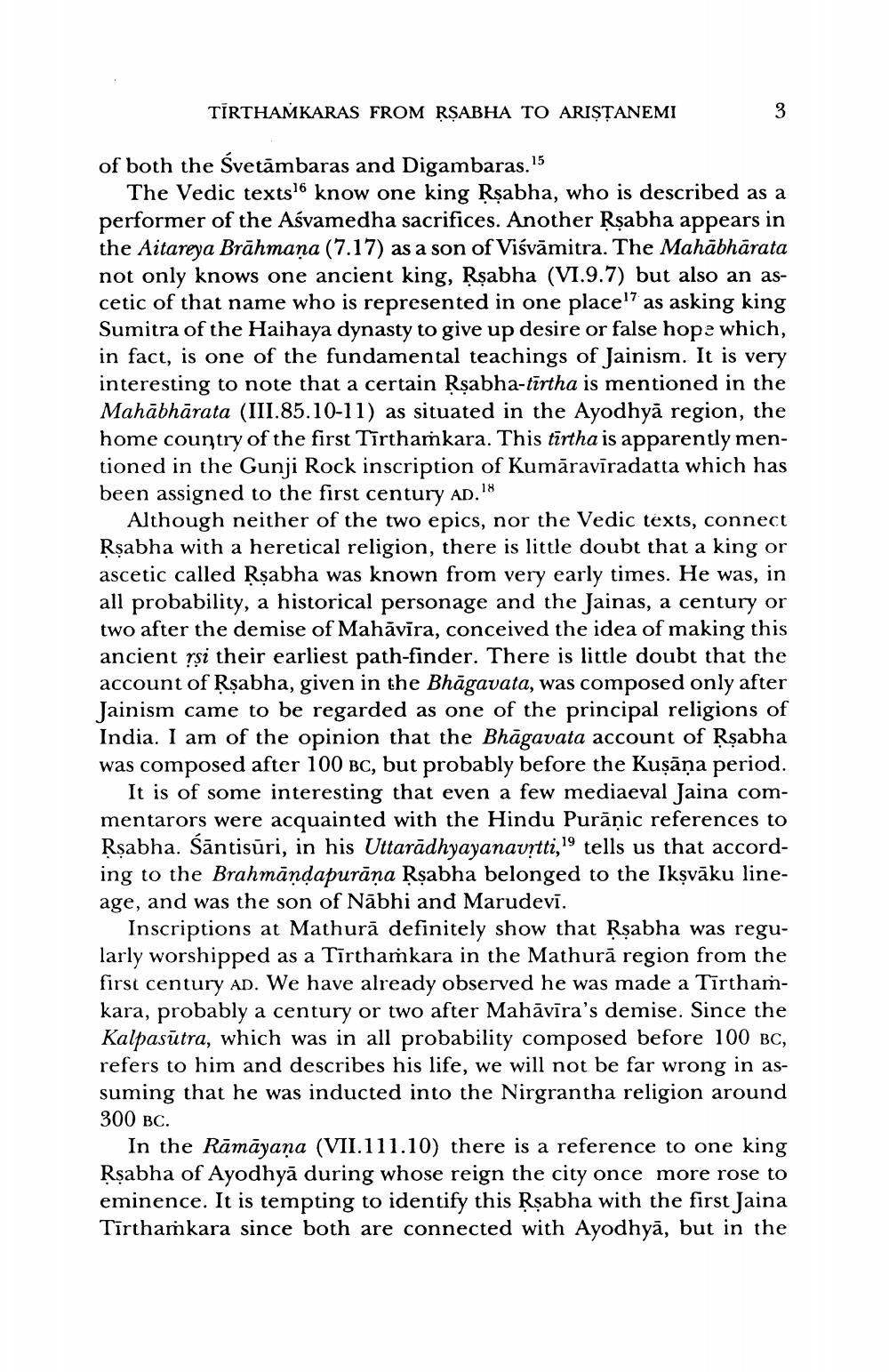________________
TĪRTHAMKARAS FROM RSABHA TO ARISTANEMI
3
of both the Svetāmbaras and Digambaras. 15
The Vedic texts 16 know one king Rşabha, who is described as a performer of the Aśvamedha sacrifices. Another Rşabha appears in the Aitareya Brāhmaṇa (7.17) as a son of Viśvāmitra. The Mahābhārata not only knows one ancient king, Rşabha (VI.9.7) but also an ascetic of that name who is represented in one place!7 as asking king Sumitra of the Haihaya dynasty to give up desire or false hope which, in fact, is one of the fundamental teachings of Jainism. It is very interesting to note that a certain Rsabha-tīrtha is mentioned in the Mahābhārata (III.85.10-11) as situated in the Ayodhyā region, the home country of the first Tīrthamkara. This tirtha is apparently mentioned in the Gunji Rock inscription of Kumāravīradatta which has been assigned to the first century AD.18
Although neither of the two epics, nor the Vedic texts, connect Rsabha with a heretical religion, there is little doubt that a king or ascetic called Rşabha was known from very early times. He was, in all probability, a historical personage and the Jainas, a century or two after the demise of Mahāvīra, conceived the idea of making this ancient își their earliest path-finder. There is little doubt that the account of Rşabha, given in the Bhagavata, was composed only after Jainism came to be regarded as one of the principal religions of India. I am of the opinion that the Bhāgavata account of Rşabha was composed after 100 BC, but probably before the Kuşāņa period.
It is of some interesting that even a few mediaeval Jaina commentarors were acquainted with the Hindu Purāņic references to Rsabha. Sāntisūri, in his Uttarādhyayanavịtti, 19 tells us that according to the Brahmāndapurāņa Rşabha belonged to the Ikṣvāku lineage, and was the son of Nābhi and Marudevī.
Inscriptions at Mathurā definitely show that Rsabha was regularly worshipped as a Tīrthamkara in the Mathurā region from the first century AD. We have already observed he was made a Tirthamkara, probably a century or two after Mahāvīra's demise. Since the Kalpasūtra, which was in all probability composed before 100 BC, refers to him and describes his life, we will not be far wrong in assuming that he was inducted into the Nirgrantha religion around 300 BC.
In the Rāmāyaṇa (VII.111.10) there is a reference to one king Rşabha of Ayodhyā during whose reign the city once more rose to eminence. It is tempting to identify this Rşabha with the first Jaina Tīrthamkara since both are connected with Ayodhyā, but in the




